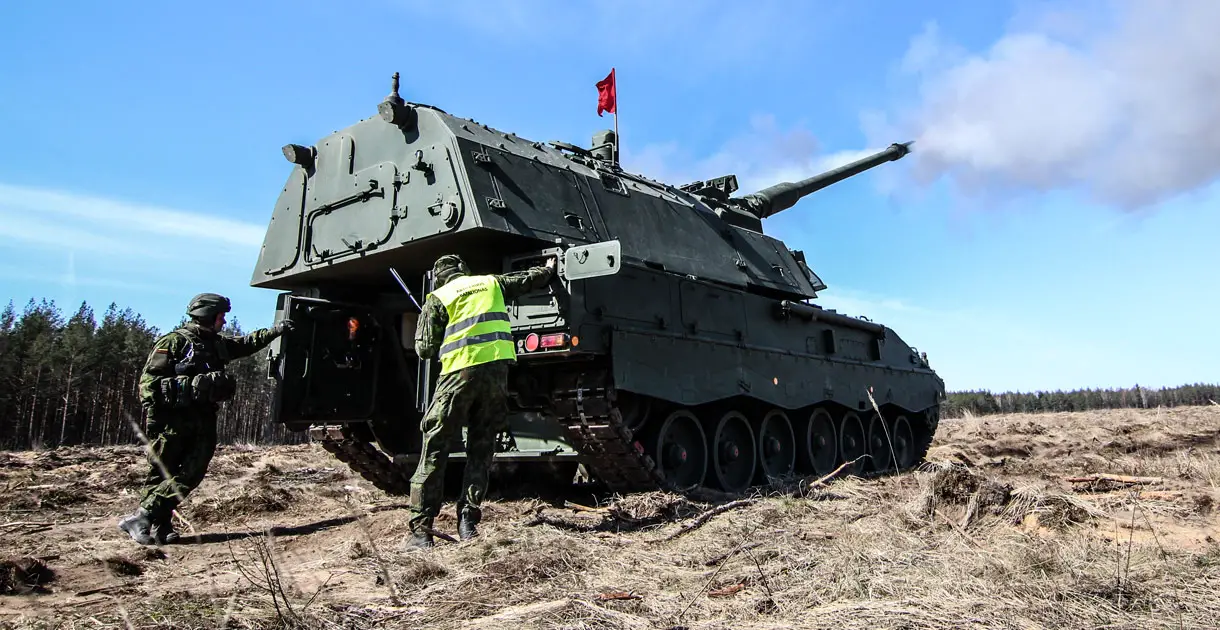The Panzerhaubitze 2000 (Armoured Howitzer 2000), abbreviated PzH 2000, is a German 155 mm self-propelled howitzer developed by Krauss-Maffei Wegmann (KMW) and Rheinmetall for the German Army. The PzH 2000 is a highly mobile and flexible weapon system which is deployed in both conventional missions as well as in asymmetric mission scenarios as indirect fire support. The fully automatic handling of the onboard supply of 60 projectiles and a highly effective 155mm/L52 gun enable maximum effect against targets with a high rate of fire. PzH 2000 has also been selected by the armies of Italy, Netherlands, Greece, Lithuania and Croatia, and more orders are probable as many NATO forces replace their M109 howitzers. The PzH 2000 is one of the most powerful conventional artillery systems deployed in the 2010s.

Rheinmetall designed the 155 mm 52-calibre JBMOU compliant gun, which is chromium-lined for its entire 8 metre length and includes a muzzle brake on the end. The gun uses a new modular charge system with six charges (five identical), which can be combined to provide the optimal total charge for the range to the target, as well as the conventional bagged charge systems. Primer is loaded separately via a conveyor belt, and the entire loading, laying and clearing is completely automated. The gun has a chromium-plated barrel and semi-automatic lifting breech block with integrated 32-round standard primer magazine.The electrical gun control system, supplied by ESW Extel Systems Wedel, comprises the automatic elevating and traversing drives with semi-automatic back-up, direct laying with electrical instrument control and manual control.

PzH 2000 is capable of a very high rate of fire; in burst mode it can fire three rounds in nine seconds, ten rounds in 56 seconds, and can—depending on barrel heating—fire between 10 and 13 rounds per minute continuously. The PzH 2000 has automatic support for up to 5 rounds of Multiple Rounds Simultaneous Impact (MRSI). The replenishment of shells is automated. Two operators can load 60 shells and propelling charges in less than 12 minutes. Rheinmetall DeTec has also developed a six-zone modular propelling charge system (MTLS), the DM72, which provides for faster handling, less wear on the gun, lower sensitivity to ignition hazards and improved range. In the PzH 2000, up to six MTLS modules form the propelling charge. Wegmann supplied both the chassis, sharing some components with the Leopard 2, and the turret for the gun.

The maximum range of the gun is 30–36 km with the standard DM121 Boattail round, about 40–47 km with base bleed rounds, and 67 km with M2005 V-LAP assisted projectiles. In April 2006 a PzH 2000 shot assisted shells (Denel V-Lap) over a distance of 56 km with a probable maximum range of over 60 km. The gun can also fire the SMArt 155 artillery round, which is used by Germany and Greece. In December 2013, Raytheon and the German Army completed compatibility testing for the M982 Excalibur extended range guided artillery shell with the PzH 2000. Ten Excaliburs were fired at ranges from 9 to 48 kilometers. Shells hit within three meters of their targets, with an average miss distance of one meter at 48 km. The Excalibur may be accepted by the German Army in 2014. A PzH 2000 L52 gun fired a shell to a range of 67 km at the Alkantpan test range in South Africa on 6 November 2019.













